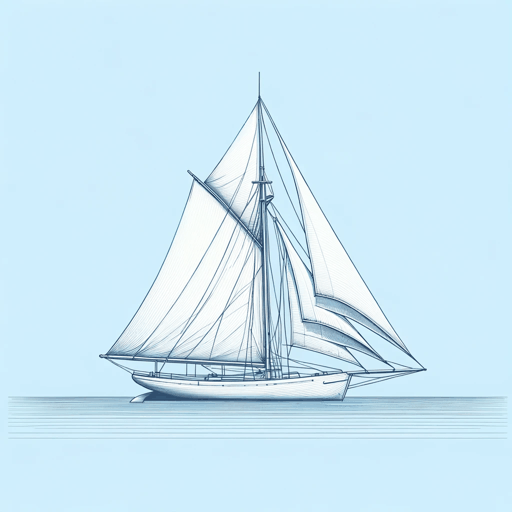62 pages • 2 hours read
Jack LondonThe Sea-Wolf
Fiction | Novel | Adult | Published in 1904A modern alternative to SparkNotes and CliffsNotes, SuperSummary offers high-quality Study Guides with detailed chapter summaries and analysis of major themes, characters, and more.
Summary and Study Guide
Overview
Jack London’s novel The Sea-Wolf, originally published in 1904, draws inspiration from an ocean voyage London took in the Pacific nearly a decade prior to his writing the novel. London himself was an avid adventurer and once spent seven and a half months on the crew of the Sophia Sutherland. This study guide references the Signet Classics 2013 edition of The Sea-Wolf.
Along with London’s other famous works, The Call of the Wild and White Fang, The Sea-Wolf was an instant success and inspired several film adaptations. It is a strongly psychological adventure novel with characters who confront complex moral and philosophical quandaries while they struggle against the forces of nature.
Written in the first person from the point of view of the novel’s protagonist, the bookish gentleman Humphrey Van Weyden, The Sea-Wolf explores issues relating to class, strength, and willpower. The setting is crucial to understanding the plot: All of the characters are removed from civilized society, whether on the Ghost or stranded on Endeavor Island. Not only are the characters continually battling the elements of wind, ocean current, storms, and fog, but they must decide how to act towards one another without the policing forces of civilized society available to keep some men from straying too far into brutality.
Plot Summary
The Sea-Wolf begins with Humphrey Van Weyden flung into the ocean just outside San Francisco after the passenger ship he was travelling on sinks. He is rescued from drowning by a passing schooner and brought aboard. Once recovered, Humphrey learns from the crew that he is aboard the Ghost under the command of Wolf Larsen. Rather than satisfy Humphrey’s request and bring him safely to port in San Francisco, Larsen decides to keep Humphrey as the new cabin boy. Unable to escape from the ship as it sails farther from land, and justifiably afraid of Larsen, Humphrey accepts his fate. He becomes part of the Ghost’s crew.
Humphrey settles into his new role as cabin boy with bitterness. His social class and educational status starkly differ from the working-class men around him; furthermore, he knows nothing about seafaring life. Larsen accuses Humphrey of never having had to work for his money or food, and though the tension between these two characters never abates, they engage in near-continuous dialogue on topics of philosophy, morality, and literature. Larsen shows himself to be intellectual, materialistic, cold-blooded, and incredibly physically strong. His brutality terrifies the crew and prompts two sailors, Johnson and Leach, to attempt to kill him. When their attempt fails but the mate dies, Humphrey is promoted to mate on an increasingly hostile ship.
The Ghost reaches the sealing grounds outside Japan and begins hunting the seals for their skins. Each day, the hunters and sailors go out on small boats, leaving Larsen, Humphrey, and the cook, Thomas Mugridge, to sail the Ghost. By this point, Humphrey has learned much in the way of sailing and feels himself to be improving, even if his antagonism towards Larsen is deeper than ever. Johnson and Leach attempt to escape the ship. While the crew searches for them, the Ghost comes upon another boat of refugees from a recent shipwreck. The refugees are taken aboard the Ghost and assimilated into the crew—all but Maud Brewster, a prominent writer and literary critic, who was travelling to Japan for her health.
The crew track down Johnson and Leach in a boat. Instead of killing them outright, Larsen leaves them in their escape boat and toys with them, ignoring their pleas for help as the weather on the sea worsens. The two are lost at sea. Maud joins the philosophical discussions that Humphrey and Larsen have. Humphrey quickly realizes that he has fallen in love with Maud and begins to plot their escape. The crew engages in a small territorial battle with hunters belonging to the Macedonia, a steamer captained by Larsen’s brother, Death Larsen, and succeeds in taking Death Larsen’s crew aboard the Ghost. To help the new men assimilate into the crew, Larsen allows the men to drink copiously, himself suffering a debilitating headache that evening. With everyone else distracted, Humphrey and Maud take one of the hunting boats and escape.
They try to sail straight for Yokohama, the nearest Japanese port, but after long trials of wind and storm, they are blown well off course. Eventually, they find a deserted island with an unknown seal rookery on its shores. They name it Endeavor Island. They immediately begin constructing huts and foraging for winter, including killing seals for meat. One morning, Humphrey discovers that the Ghost is washed up on their beach. Only Wolf Larsen is aboard—a Wolf Larsen blinded and weakened by his severe and unpredictable headaches. Humphrey sets to repairing the Ghost despite Larsen’s repeated attempts to thwart his progress. As the repairs near completion, Larsen suffers several strokes, his body falling slowly to paralysis. Eventually, Larsen dies, just as Maud and Humphrey strike out on the newly repaired Ghost. They give Larsen a burial at sea as they spot another ship on the horizon, signaling their rescue.
Related Titles
By Jack London

A Piece of Steak
Jack London

Martin Eden
Jack London

South of the Slot
Jack London

The Call of the Wild
Jack London

The Iron Heel
Jack London

The Law of Life
Jack London

To Build a Fire
Jack London

White Fang
Jack London

